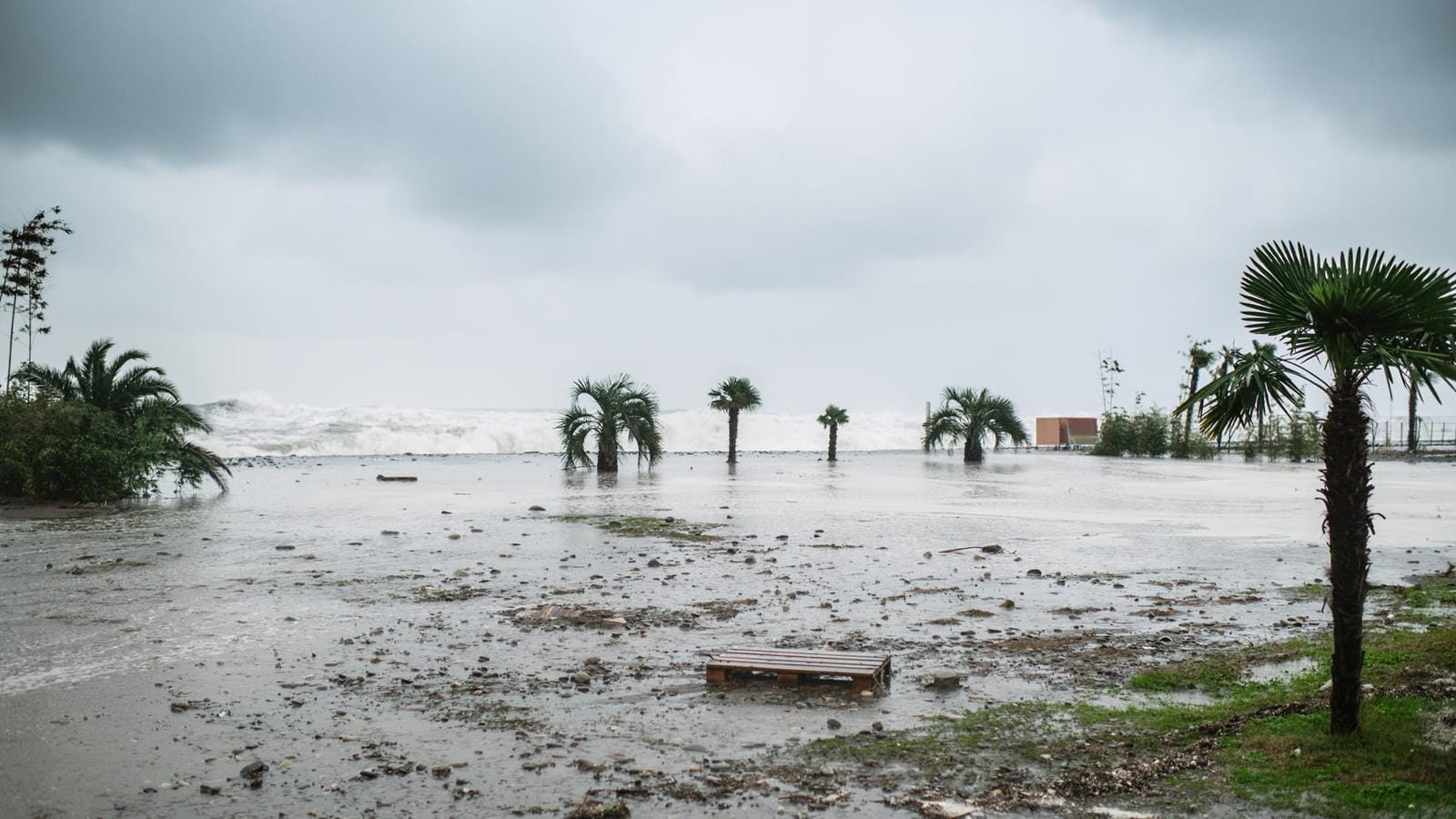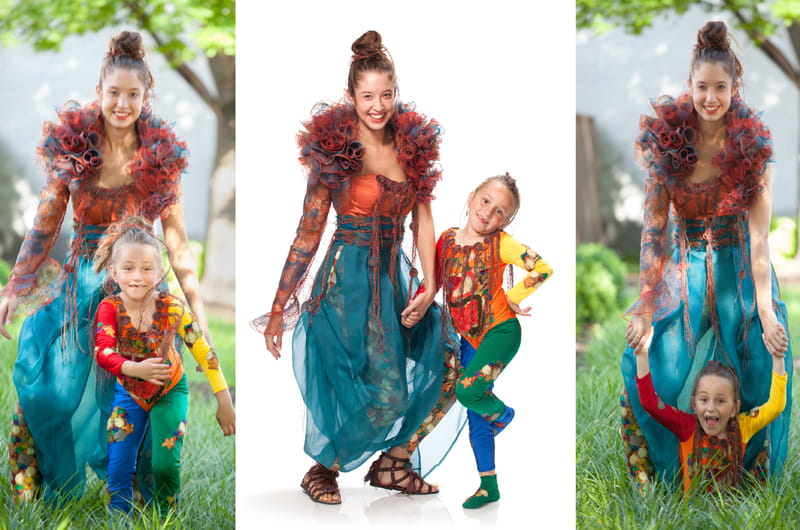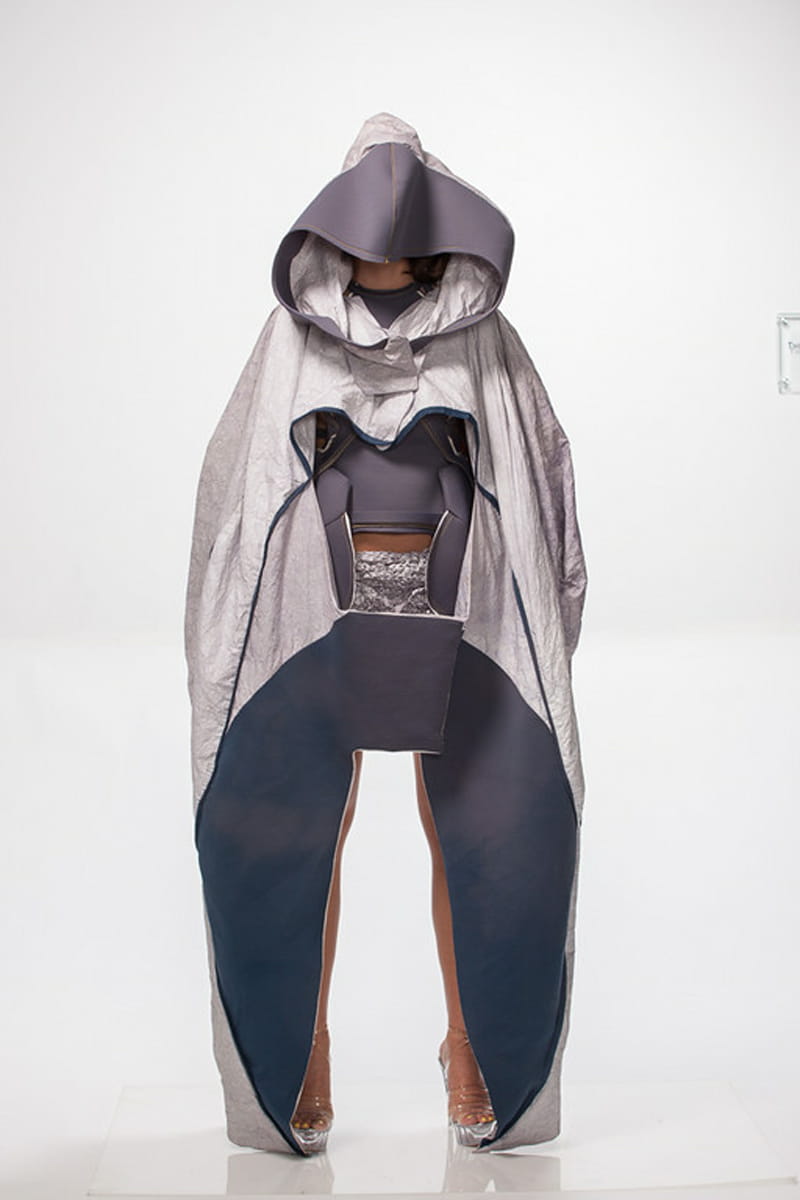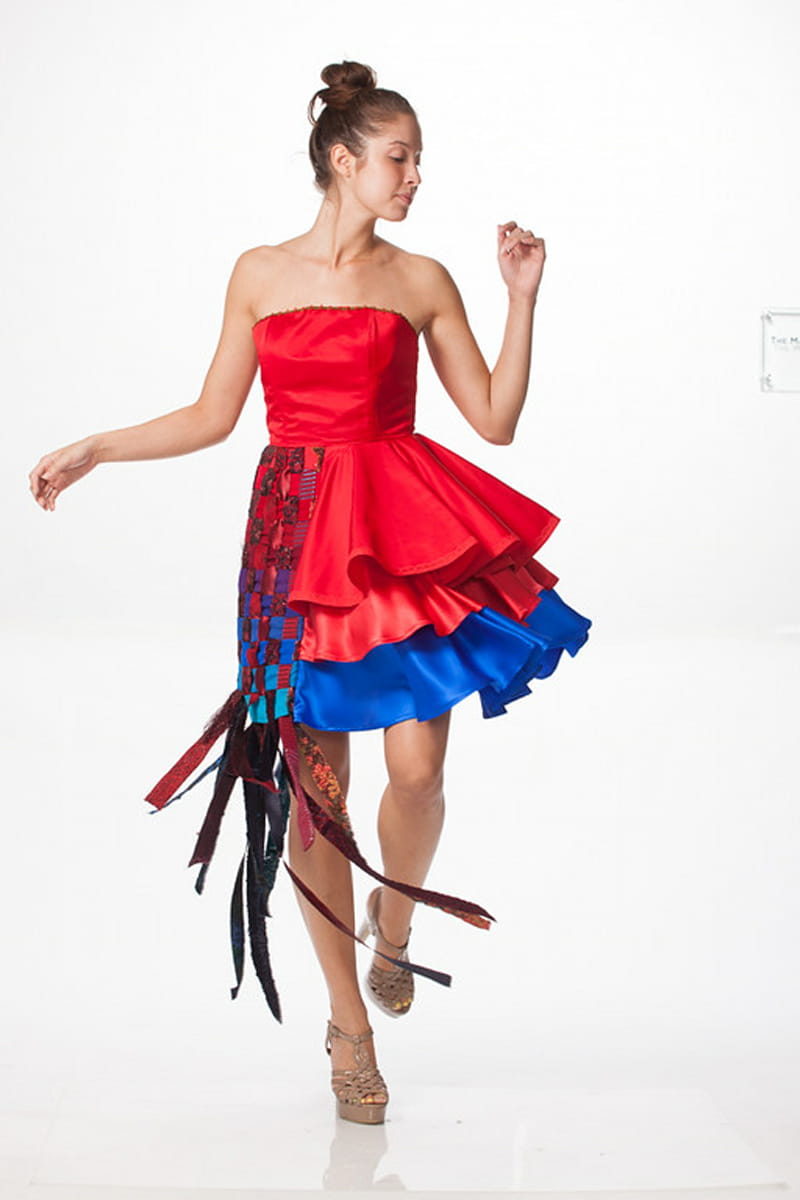Research on the Runway: Drexel Fashion Designers Team Up with Scientists for Descience Competition

- Drexel Environmental Collaboratory Releases Cross-Sector Findings on Severe Weather Recovery Challenges
- Student Sketches Bring Drexel’s Historic Objects to Life
- Drexel Launches the Manuel Stamatakis Center for Alternative Investments at the LeBow College of Business
- Drexel-Penn A Cappella Sing-Off Brings a New Battle of 33rd Street

Fashion, meet science. Eight students and alumni from Drexel University’s Antoinette Westphal College of Media Arts & Design are among 61 fashion designers who were chosen to participate in the first-ever Descience Fashion Competition.
The national competition matches designers with scientists to create garments that reflect scientific advances. The competition will culminate with a fashion show featuring the collaborative creations at Massachusetts Institute of Technology’s MIT Media Lab in Cambridge, Massachusetts, on Monday, Sept. 29.

“The marriage of science and design has been central to our fashion design program’s research interests in recent years, producing outcomes that address real-world problems and creating fashions that are both beautiful and useful,” said Allen Sabinson, dean of the Westphal College. “We’re proud and delighted that our talented students and graduates are showcasing their designs in such an unusual and high-profile competition.”
Descience brings together the world of scientific discovery and the innovative minds of fashion designers. Designers from all over the country, including design school faculty and students, emerging design entrepreneurs and designers from large fashion houses, applied for a spot in the competition in Jan. 2014. The scientists came from diverse fields of research—from chemical engineering to biomedical imaging—and from all over the world, including Europe, the United States and South America. Teams, composed of one scientist and one designer, selected each other on the basis of their research and design. The teams were announced in Feb. 2014.
The scientists provided their fashion design partners with ideas and images of their scientific research, describing what makes them passionate about their work. Teams actively collaborated for months, creating garments that represent the scientist’s work and the designer’s vision. The designer sketched the concept, and the scientist ensured it was true to the scientific research. Continued partnership has occurred in many cases, where designers visited their partner’s laboratory and the scientist got hands-on with the design execution.
Fifty designer-scientist teams were then chosen by a panel of advisors to be part of the Descience Runway Collection. Judges for the show were drawn from the realm of science as well as from fashion, including a Nobel laureate, professors from universities including Harvard and MIT and design leaders from legendary fashion brands such as Tiffany & Co. The judges will select the most innovative design that best represents the science research. Each member of the winning team will be awarded a $1,500 cash prize.
Teams also submitted photographs of completed looks to the Descience website, where they are currently competing for votes. The design with the most votes will be named “People’s Choice,” featured in the runway show and qualify as a finalist, with each team member receiving a $500 cash prize. Voting closes Sept. 26 at 11:59 p.m. ET.
“This exciting opportunity is an important indication of how professionals in all areas have and will continue to work in an interdisciplinary manner, linking designers of all types with scientists and businesspeople alike for the betterment of society,” said Roberta Gruber, head of the Department of Design in the Westphal College, who served as a faculty advisor for the Drexel students and alumni. “Our students and alumni participating in Descience have been immersed in the process and loving every minute of it. I look forward to seeing the outcomes on the runway.”
There are four current Drexel fashion design students and four fashion design alumni in the contest. The current students are undergraduate student Lela Thompson and graduate students Nancy Volpe Berlinger, Shih-Hui (Sherry) Chang and Xiaozhu Li. The alumni participants are Arielle Gogh, Bravo TV’s “Styled to Rock” star Autumn Kietponglert, Katya Roelse and Amy Stolzsfus.

A brief description of each collaboration follows:
- Team Epic: Nancy Volpe Berlinger and scientist Ulf Gehrmann, a postdoctoral fellow at the Institut Curie in Paris, France, have created an elegant garment that is inspired by the crucial function of the gut in regulating the immune system. The shape-shifting dress reflects the ever-changing nature of the immune system.
- Team Obuba: Shih-Hui (Sherry) Chang paired up with scientist Pablo Rojas, who studies biofilm and infection. Using foam to mimic film and a net for the understructure of the garment, the team’s unique combination reflects the different stages of biofilm development.
- Team Transmutation: Arielle Gogh worked with Esther Baena, a research fellow at the Dana-Farber Cancer Institute, to create a piece inspired by Baena’s research on how to interpret the growth and process of cancer tumors. The garment designed by Gogh uses layers and colors to reflect the different sizes and colors of tumors in the body.
- Team Nebulous Structure: Autumn Kietponglert collaborated with Julie Katelyn Anderson, who is working toward her PhD in chemistry at the University of Arizona and studies the galactic story with molecular probes in the field of astrochemistry. The garment they created uses iridescent material to represent the light seen from space and the zipper across the shoulder imitates the spectra, the first step in astrochemistry science.
- Team Yuan: Xiaozhu Li collaborated with Hui-Min Chen from the University of Massachusetts on a garment inspired by Chen’s genome engineering based on fly ovaries. The glossy skirt symbolizes the vivid energy of mother origin. The structure on the shoulder represents the DNA. Braiding of several different materials shows both the complexity of the ovary and the intricate genetic design.
- Team Gaia: Katya Roelse worked with scientist Julio Sepulveda on a garment inspired by the forms, colors and textures of rock and mud layers found on land and at the bottom of the ocean. By combining shibori, embroidery and organic, free-form sewing techniques into multiple layers, their work represents a new geology and biogeochemistry of stratified fabric and pattern.
- Team SwashBucklers: Amy Stolzsfus and scientist Ylva Kaiser of Karolinska Institutet collaborated on a futuristic-looking piece inspired by Kaiser’s work in immunology. The design reflects the millions of B cells circulating through our bodies as “microscopic warmongers.”
- Fruit Fly Fashion: Lela Thompson and Anastasia Gangaev, a graduate student in biomedical science at the University of Amsterdam, worked together to create a dress inspired by the research of transcription factors conducted on the larvae of fruit flies. A blue staining agent, X-gal, visualizes the gene expression in the wing discs of the larvae. The fabric was hand painted to represent this staining, and the dress was draped to imitate the irregular forms of mutated and normal wing discs.
About Drexel's Fashion Design Program:
The undergraduate and graduate fashion design programs in Drexel’s Westphal College are recognized in the top 10 fashion programs in the United States and in the top 20 programs in the world by Fashionista Magazine. The rigorous curriculum includes a unique six-month co-op experience that complements coursework in conceptual design, presentation skills, CAD and manufacturing procedures. Students conclude their senior year with the presentation of their collections in the Drexel Fashion Show, which is produced by students in the design and merchandising program. For more information, visit: http://www.drexel.edu/westphal.
About Descience
Descience is a unique concept that aims to foster the collaboration between two creative worlds, providing science with a new language, and giving fashion a new platform for appreciation. The vision is to create a reality where science will become tangible and accessible to anyone, regardless of educational background. It’s led by a team of six women: Executive Director Yuly Fuentes, PhD; Science Director Patricia Torregrosa Paredes, PhD; Fashion Director Claire Jarvis; Director of Communications April Gardner; Creative Business Director Isidora Valdes. Descience is supported by a diverse group of visionary advisors, including Nicholas Negroponte, founder of the MIT Media Lab; Bryan Rafanelli, renowned event planner for the White House; Lisa Hughes, co-anchor of WBZTV; Atsuko Toko Fish; Rebeca de Vives; Hugh Herr; Christine Reif; AriDaniel Shapiro; Kimberly A. Kramer; and Ginny Fordham. It is fiscally sponsored by the Buckminster Fuller Institute, a 501(c)(3) public charity. This year’s capstone event is Descience Runway, where the collaborative vision between scientists and fashion designers are highlighted. For more information, visit: http://fashiondescience.com.
Drexel News is produced by
University Marketing and Communications.